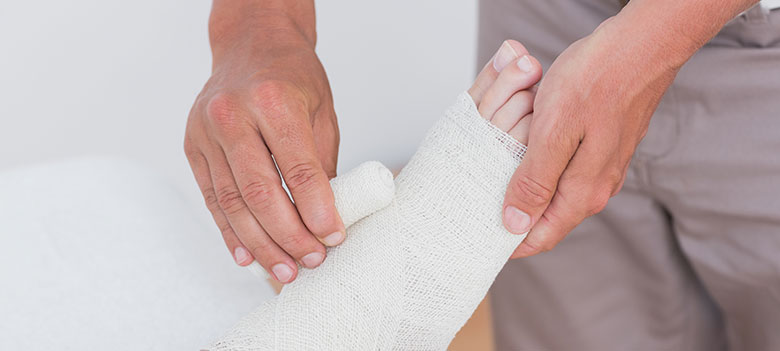If you’re at risk of lymphedema — for instance, if you’ve recently had cancer surgery involving your lymph nodes or have venous insufficiency in your limbs — your doctor may diagnose lymphedema based on your signs and symptoms.
Most of the time, this type of specialized treatment requires patients to go to an outpatient facility multiple times a week. This is difficult for the homebound patient. At Health Related, we have multiple therapists trained in lymphedema therapy, so we can bring that specialized treatment right to your door!
Although there’s no cure for lymphedema, treatment focuses on reducing the swelling and controlling the pain. Lymphedema treatments include:
- Exercises. Light exercises in which you move your affected limb may encourage lymph fluid drainage and help prepare you for everyday tasks, such as carrying groceries. Exercises shouldn’t be strenuous or tire you but should focus on gentle contraction of the muscles in your arm or leg. A certified lymphedema therapist can teach you exercises that may help.
- Wrapping your arm or leg. Bandaging your entire limb encourages lymph fluid to flow back toward the trunk of your body. The bandage should be tightest around your fingers or toes and loosen as it moves up your arm or leg. A lymphedema therapist can show you how to wrap your limb.
- Massage. A special massage technique called manual lymph drainage may encourage the flow of lymph fluid out of your arm or leg. And various massage treatments may benefit people with active cancer. Be sure to work with someone specially trained in these techniques. Massage isn’t for everyone. Avoid massage if you have a skin infection, blood clots or active disease in the involved lymph drainage areas.
- Pneumatic compression. A sleeve worn over your affected arm or leg connects to a pump that intermittently inflates the sleeve, putting pressure on your limb and moving lymph fluid away from your fingers or toes.
- Compression garments. Long sleeves or stockings made to compress your arm or leg encourage the flow of the lymph fluid out of your affected limb. Wear a compression garment when exercising the affected limb. Obtain a correct fit for your compression garment by getting professional help. Ask your doctor where you can buy compression garments in your community. Some people will require custom-made compression garments. If you have difficulties putting on or taking off the compression garment, there are special techniques and aids to help with this; your lymphedema therapist can review options with you. In addition, if compression garments or compression wraps or both are not an option, sometimes a compression device with fabric fasteners can work for you.
- Complete decongestive therapy (CDT). This approach involves combining therapies with lifestyle changes. Generally, CDT isn’t recommended for people who have high blood pressure, diabetes, paralysis, heart failure, blood clots or acute infections.
Luckily, our specially trained therapist can help you with each of the techniques mentioned above. Contact us today for more information.




